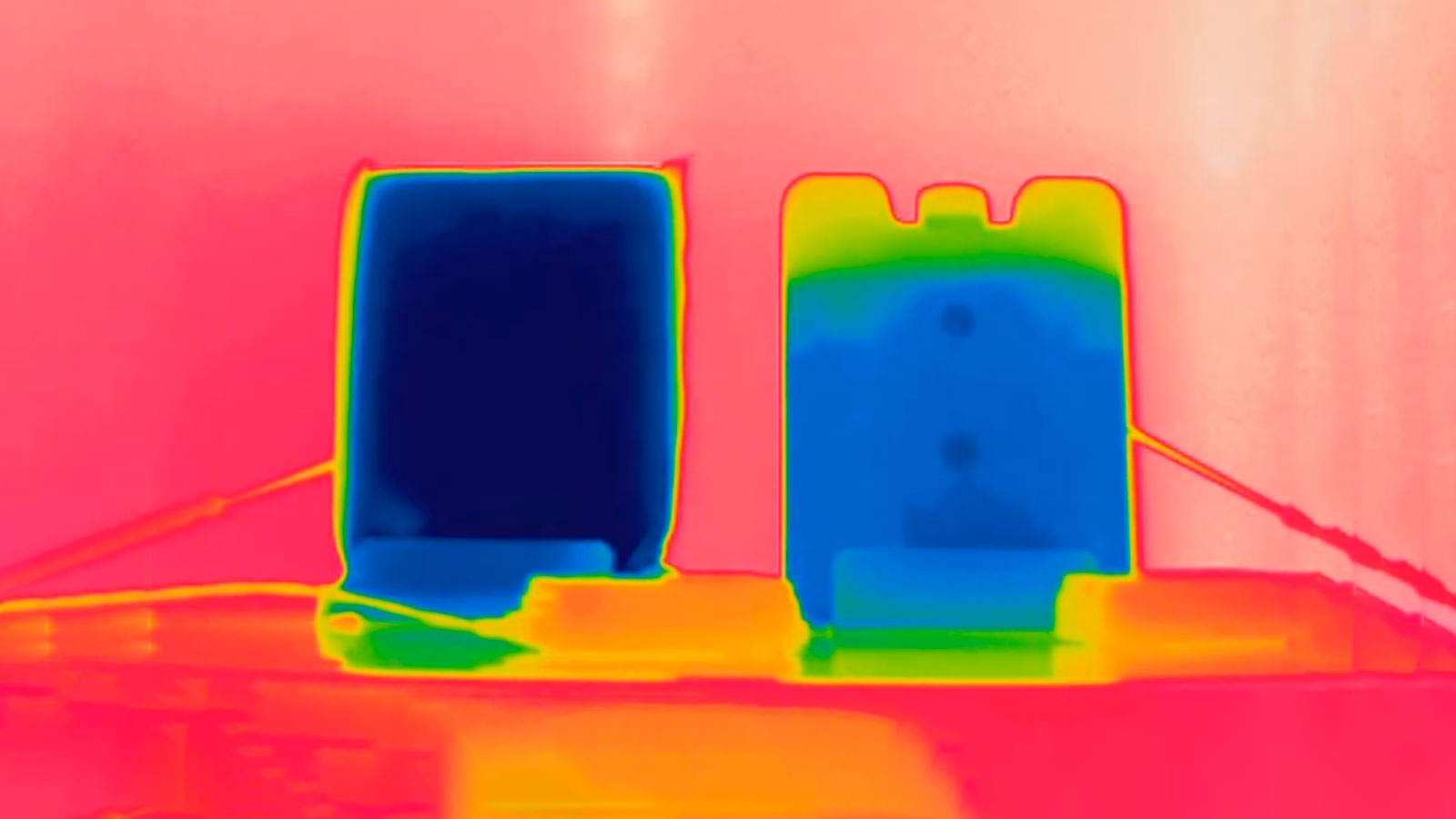Our Advantage
ThermaBrick® Refrigerant Bricks outperform the competition in more ways than we can count, below are just a few.

ThermaBrick® Refrigerant Bricks vs. Gel Packs
- Custom-size cooling elements are an exact match to the package design
- Fewer cooling elements provide more efficient use of storage space in the box
- Uniform temperature inside the box
- No significant liquid leakage if the cooling element is damaged
- Fewer questions and fears about the cooling liquid escape in case of damage by the customer
- Dimensionally stable during freezing process and thawing equate to higher efficiency
- Improved preconditioning storage possibilities, even in the freezer area, as refrigerants can be stacked easily
- Well documented that shape distortion occurs with gel pack refrigerants during phase change
- Shape distortion causes inconsistent heat transfer with gel packs
- Payload temperature distribution is more homogeneous with ThermaBrick® Refrigerant Bricks
- Payload reaches lower temperatures faster through conduction when ThermaBrick® Refrigerant Bricks are used
- The payload temperature is more homogeneous and lower across the payload with ThermaBrick® Refrigerant Bricks
ThermaBrick® Refrigerant Bricks vs. Dry Ice
- No hazardous goods, no labeling required, no parcel service restrictions
- No complex logistics and safety measures, no personal protective equipment
- Reduced risk for the recipients of the goods
- More precise planning, even with increased shipping volumes, reduces costs or delayed deliveries
- Efficient utilization of the storage space in the parcel
- Flexibility in packaging provides increase in the number of shipping days in a week
- Multiple uses depending on the application or through return programs
- Cooling elements that can be private labeled and branded
- Fewer complaints, better ratings by the customer
- Creates the capability to pre-pack product that would improve labor scheduling and scale your business more easily during peak periods
- Unlike dry ice, brick refrigerants present no danger to package handlers, freight companies, or consumers
- Eliminates the cost to print hazardous materials labels, manage the inventory, personal protective equipment (PPE), closed storage safety measures, costs to apply and mitigated potential fine
ThermaBrick® Refrigerant Bricks vs. Rigid Plastic Bottles
- Exact adaptation of the cooling elements to the packaging without expensive molds or tooling
- Small-quantity production is also possible
- Uniform temperature inside the shipper
- Increased control over the temperature in the box due to exact dimensioning of the cooling power.
- No over-or-under capacity, which reduces costs
- No significant fluid leakage if the cooling element is damaged
- Significantly faster freezing, especially with large quantities
- No upfront tooling costs which saves tens of thousands